Preventing Dog Bites in Children
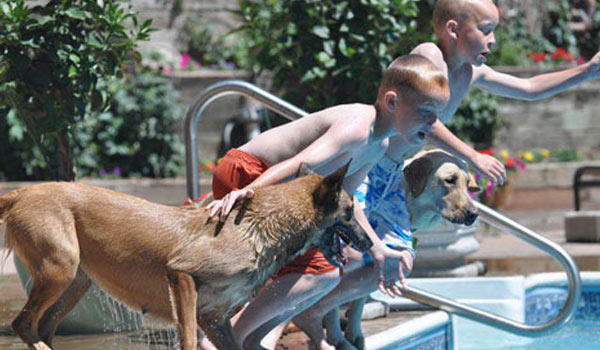
According to a 1994 study by Mathews and Lattal, approximately one million dog bites occur every year in the United States. According to the study, 60-70% of those involve children. Boys are bitten more often than girls, and a third of the dogs that attack children are owned by the family.
A study by Beck done in 1975 indicated that 87% of biting dogs are intact males and most dog bites occur in or near the victim's home. Another study by Sacks in 1989 indicated that 70% of the children that were killed by dogs were under the age of 10 and 22% were under the age of one year with 7% being sleeping infants.
What Parents Need to Teach Their Children
- NEVER disturb any dog who is sleeping, eating, or caring for puppies.
- NEVER pet a dog, even your own, without letting him see and sniff you first.
- Children must always ASK PERMISSION from the owner and their parents BEFORE petting any dog. I never allowed my children near strange dogs much less pet them.
- If the owner cannot control the dog and have it SIT nicely for the child to pet, WALK AWAY.
- NEVER approach a dog who is confined behind a fence, within a car, or on a chain.
- NEVER TEASE any dog by poking at them through fences or car windows or reaching your arm through to pet them.
- NEVER approach a strange dog you don't know or a dog who is not with his owner.
- NEVER RUN away from a dog that is chasing you. STOP, STAND STILL, REMAIN CALM, ARMS AT YOUR SIDES, be quiet, and DO NOT SCREAM. Walk away SLOWLY FACING THE DOG BUT NOT STARING AT its eyes.
- If a dog attacks, "feed" him your jacket, a schoolbook, a bicycle, or anything else that you can get between you and the dog.
- If you are attacked, STOP, CURL UP IN A BALL LIKE A TURTLE, COVER YOUR HEAD WITH YOUR ARMS AND HANDS.
- Do not chase after dogs.
- Do not scream and be loud around dogs.
- Children should not stare into the eyes of a dog.
- If a dog starts to circle you, turn with it, don't let it get behind you.
- If the dog shows aggressive behavior (i.e., barking or growling) put something between you and the dog, like a chair.
- Just because a dog wags its tail does not mean it's friendly.
- Always ask the owner of a dog if it is OK to pet their dog.
- If you are in an area with a stray dog - leave that area.
- If a dog approaches, you remain calm and motionless. Keep your hands at your side. Speak with a soothing voice.
- If a dog is injured do not touch or try and help it. Go get an adult.
If you own any dog, but especially a dog that has had the smallest amount of aggression or protection training, it is your moral and legal obligation to make sure that you do everything possible to ensure that your dog is never in a situation where it could bite a child.
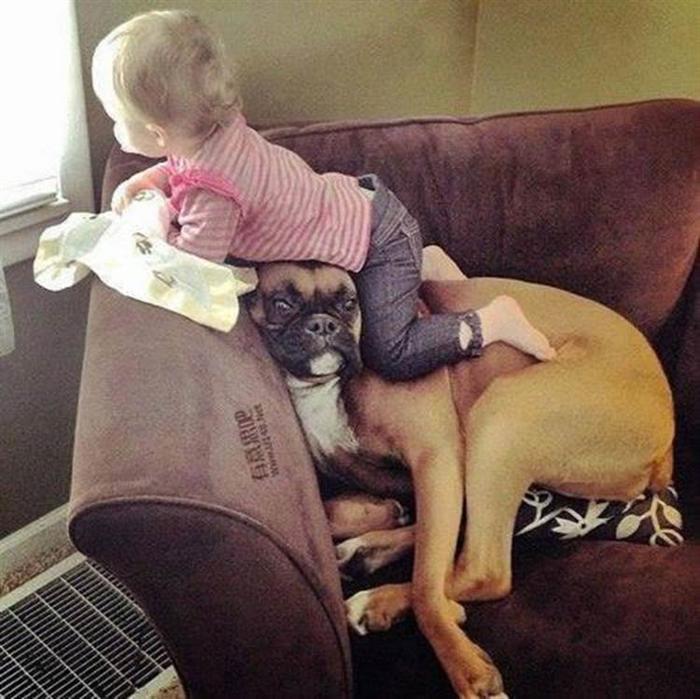
The Humane Society estimates that there are 800,000 dog bites that require medical attention every year. Dog bites rank second behind sexually transmitted diseases as the costliest health problem in the country. Over 60% of those bitten are children and 80% of the fatalities are children.
I am not going to go into the reasons people train dogs to bite. But if you want to have your eyes opened, I suggest that you view our dog bites article. Several of these accidents are with children! I also recommend you read the book, Fatal Dog Attacks: The Stories Behind the Statistics by Karen Alise. This book will shock you. When you start to read it, you cannot put it down. The STUPIDITY of how people handle their dogs will shock you.
I am the first to admit that problems exist when inexperienced people attempt to protection train a dog with inappropriate temperament. Many often follow this training with inadequate and irresponsible handling or housing. The fact is that most dog bites occur from dogs that have had little to no training, they simply have poor temperament. They are either sharp, dominant, or territorial animals.
A perfect example occurred in Kansas a few years ago when Sabine Davidson allowed her Rotts to kill an 11-year-old neighbor boy. This case was an example of one mistake compounded upon another:
- Ms. Davidson had attempted protection training her 4 Rottweilers.
- She had tried to join several Schutzhund clubs and had been kicked out of all of them.
- She had purchased several training videos from me.
- The dog had an inappropriate temperament. When I testified against her in court, I saw video of one of these dogs. It had weak nerves and was a sharp dog.
- From all indications, the male pack leader was a dominant dog.
- The dogs were allowed to live together in the backyard and were not kept in separate kennels. (This elevated their pack drive.)
- The gate to the backyard was in poor repair. The dogs had gotten out of the yard numerous times and roamed the neighborhood chasing children into their homes. As a result of this, the dogs had established a large area that they considered "THEIR TERRITORY".
- The police had warned them on numerous occasions to fix the gate and keep the dogs in.
- The Davidson's had not made any attempt to repair the gate.
- The dogs were allowed to run the fence and bark aggressively at neighborhood children who would be playing across the street. The Rottweilers considered this their territory and the children were looked at as prey or competition to that territory.
I am proud of the fact that I testified (free of charge) for 1.5 hours at the Davidson trial and helped put her in prison for 12 years. The DA sent me a letter that he would not have gotten a conviction without my testimony. I would do it again in a similar case.
This article deals with things that can be done to help eliminate child bites in dogs. It's too late for the young boy in the Davidson case (and I am not sure that the things I am about to talk about would have saved his life, we will never know). But there are things that other children can do to lessen their chances of getting bit by strange dogs or even their own dogs.
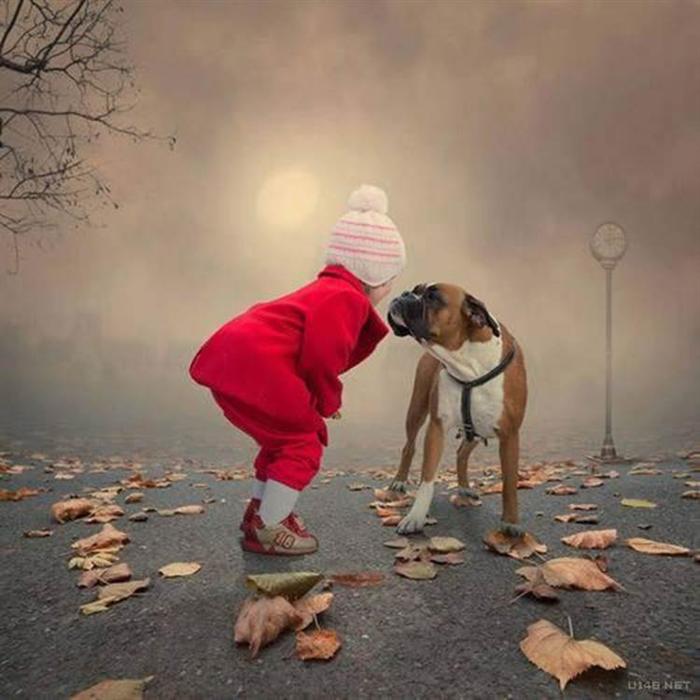
Children Need Training Too
Children should be taught to never approach a strange dog without asking permission from the owner, even if the dog looks like it's friendly. This is something the parents of children need to be aware of.
It absolutely amazes me how often I have people visit my kennel with children who are allowed to run up to a new dog when I bring it out (many times after being told not to).
Children should be told to report seeing any loose dogs roaming in their neighborhood. This can give the parents the opportunity to contact the owners and warn them of the potential for danger (which many pet owners deny even exist). "Old Spot would never consider biting a child!” WRONG ANSWER!
The first approach with these people needs to be reverse psychology. It eliminates initial hostility. You go to them and act concerned for the dog. You do not want to see their dog get run over. You realize that they were out cutting the grass in the backyard and the dog was only out of their sight for 20 seconds but it crossed the road into your yard and it could easily have been hit by a car. If they had an in-ground wire fence (like theDogtra E Fencethe dog would never leave their yard.
The second time it happens it should be explained that you are concerned for your children.
Tell them they either contain their dog 100% of the time or you will contact animal control. The third time, if it were possible, I would spray the dog with pepper spray and call the animal control. Chasing the dog out of your yard is an excellent way to let the dog know that your yard is not part of his territory. Dogs inherently understand this.
Just explain to the animal control officer that you feared for the safety of your children.
Continue to call the police every time the dog was seen running loose. I would also start a file on the dog. Insist on knowing the police incident number every time you call. Keep these on file. As terrible as this may sound, you may need this as evidence someday.
If the officer will not give you the incident number, call his supervisor and explain your concerns. If it does not work, go to the Chief of Police and then up to the Mayor or City Manager. Tell them you are going to start to write letters to the media and use their name in the article saying they refuse to do anything about this situation and that you fear for your children's safety. You may even work to get a leash law passed in your community. Sooner or later, you are going to get someone's attention. The street cop may not want to write a report so he will not record an incident. This means that as far as the police are concerned, this never happened.
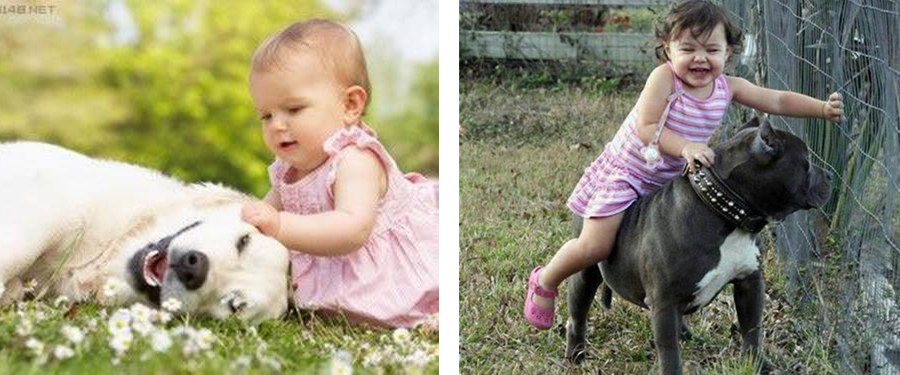
What To Do Around an Aggressive Dog
If a dog growls or acts aggressively towards you or your children, do not scream or turn and run. This can trigger the dog's prey drive. When that happens, the dog is going to chase you down and often bite. This very same dog may have ignored the person or child had they stood still and faced them (but remember not to look it in the eyes). Many times, the most the dog would have done was sniff the child and leave.
The best advice is to slowly turn sideways to the dog and divert your eyes from his eyes (DO NOT STARE AT THE DOG). Stand quietly and keep your arms down by your side. Dogs do not naturally give direct eye contact for any length of time. The only time they get or give eye contact is just before they attack, or just before they flee. So if you have a dominant dog getting direct eye contact from a child, the dog interprets the eye contact as prey that is about to run. That may be enough to trigger an attack.
Children may instinctively want to quickly raise their arms so they will not get bit. Quickly raising the arms can also trigger prey drive. It also exposes the chest area to a bite. A chest or upper backbite can be much more serious than an arm bite. Many people think that you need to turn and run to trigger prey. This is not so. Any quick movement, no matter how small, can trigger a dog's prey drive. If a dog has only been partially trained in protection work, a quick move of the arms will trigger its prey drive.
If the dog just sniffs the child and walk away, the child should remain stationary for a few seconds and then gradually back away from the dog. They should not turn their back and walk (or run) away.
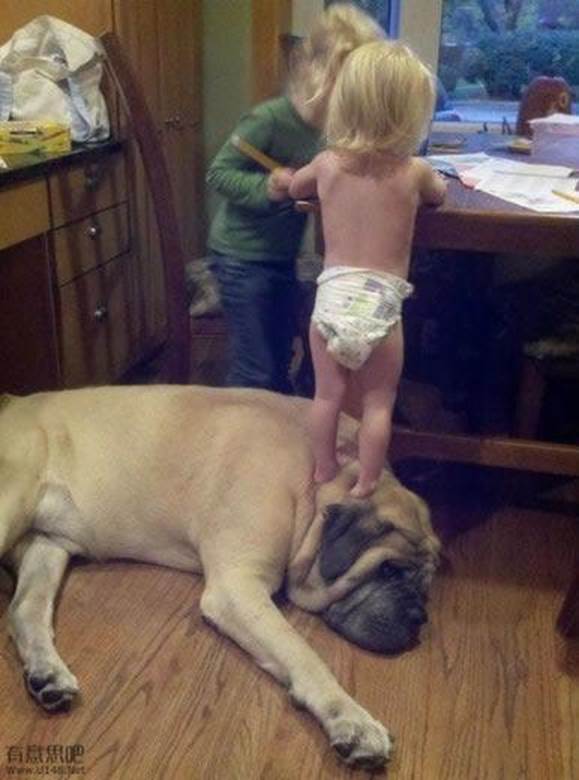
What To Do In a Dog Attack
In the worst-case scenario, the dog will charge in for a bite. If this happens, the child should fall to the ground and curl up in a fetal position with their arms over their head. The dog is going to read this as a submissive posture. He may not even bite at that point. He may accept the submission and after standing over the child for a few seconds walk away.
Now here is the difficult part for parents. Should you look outside when the kids are screaming and see a strange dog standing over the top of a child on the ground, you do not want to run out screaming your head off. This may also trigger an attack.
This has been proven again and again when two strange dogs are checking each other out and the owner overreacts and charges the scene screaming. The owner's actions actually trigger the attack. As long as the dog is not biting the child, remain calm. Get a weapon or something (pepper gas, a garbage can, or a garbage can lid) to keep between you and the dog. Probably the safest way is to take pepper gas and the lid of a garbage can (to use as a shield) and slowly walk up to the dog. Without saying anything, spray him in the nose and eyes. When the dog leaves, you will need to take the child into the shower and wash the gas out of his or her eyes and nose (it's going to hurt).
God forbid that dog should attack a child on the ground. The best defense is still to remain tucked up in a ball. Many times, a dog will take one nip and leave. As alarming as this sounds, and as horrible as it may seem, this action is going to cause less damage than being dragged down as the child tries to run away. In addition, the dog's prey drive will be elevated to a higher level by a fleeing child than one who drops to the ground and acts submissively. Dropping to the ground and acting submissive may be enough to satisfy a dominant dog that just wants to show his superiority over this child. If you want to learn more about dominant dogs, read my article titled Dealing with the Dominant Dog.
It's a misconception that parents only need to worry about the big Rottweiler or German Shepherd next door. I have seen some very, very nasty small dogs. I have been doing helper work and training dogs in protection work for 20 years and my worst dog bite came from my mother's toy poodle. It only bit me once.
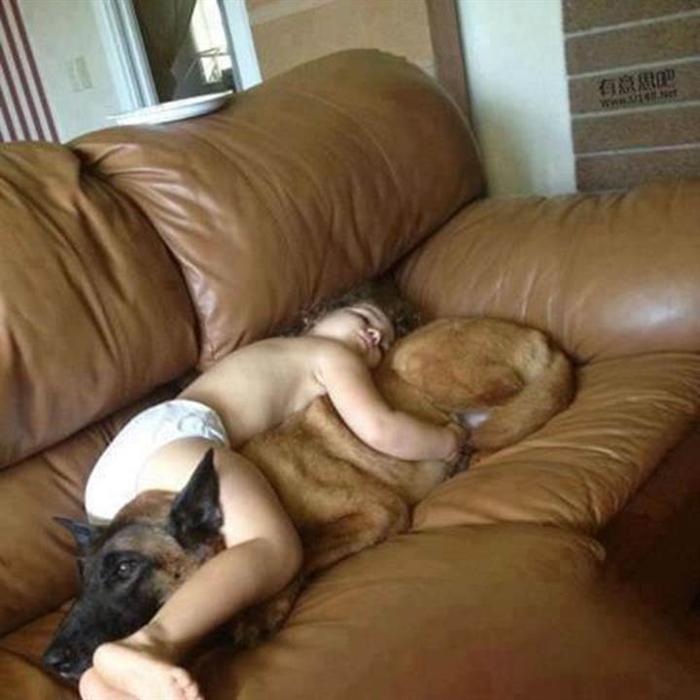
Eliminating Dog Bites Through Training
Eliminating dog bites begins with proper management of the pet by the owner. It's the owner's responsibility to make sure that his dog is properly obedience-trained and properly contained. Proper management is the first step in eliminating dog bites.
Correct management means the owner controls the environment the dog is allowed to be in. Proper management also means the dog owner has complete control over the dog in every environment he chooses to allow his dog to be in. That is either accomplished with a dog leash or the dog is 100% obedience trained and 100% under the control of the owner. It also may mean using a dog crate or dog kennel or a dog safe yard.
Obedience training is the second step at reducing aggression/dominance levels in all dogs. Obedience training is not the only solution to eliminating aggression but it is an integral part. We recommend people get my DVD titled Basic Dog Obedience along with a training collar. That means a prong collar, a dominant dog collar, or a remote collar.
To a certain extent, dogs are submissive to a human when they get obedience-trained. So obedience training is important.
If you see your dog growling and giving direct eye contact when you or your children take a toy away, it's time to become proactive. That dog should never have toys again. Not ever. Dogs don't need toys.
That dog should also be fed in a dog crate. The only place it should ever have bones or chew toys is in the crate. If you feel you have a dominant dog, I produced an online course titled Dealing with Dominant and Aggressive Dogs.
If you have no interest in personal protection or breeding, you should neuter your dog at a young age (preferably before it turns 1).
Statistics show that un-neutered dogs are 3 times more likely to bite than neutered dogs. Although this is not something that is set in stone. If a dog is neutered at a young age (6 to 10 months), it will often reduce aggression. But if a dog is neutered after 2 years of age, it often has little effect on aggression. In fact, neutering an adult female can often increase aggression.
If a dog is a sharp dog by nature, the owner must take additional precautions on this dog's containment system. It needs to be in a very secure and escape-proof living environment (i.e., a dog kennel or crate that he cannot get out of).
If you see your dog charging up and down the fence line in your backyard, barking aggressively at the kids across the street or next door, then you have a potential problem. Do not look at this situation as a case of the kids teasing the dog. In most cases, it's the dog becoming territorial and challenging the kids.
On the same note, there is a difference between an aggressive bark and a dog that barks because it wants to get out and play. If you do not know the difference between the two scenarios, I recommend that you talk to your vet or possibly get my video titled, The First Steps of Defense. I will say one more time, a person's lack of education is the root of all these problems.
Some people think chaining a dog is the solution; after all, how can a dog get off a chain? They are 100% wrong. While it's okay to chain a dog out for an hour or so (we do this here at our kennel), it is not okay to make a dog live on the end of a chain. Chaining a dog makes matters worse. Dogs that live their lives on a chain become almost schizophrenic. It's a cruel way to keep a dog and it usually makes them more aggressive.
Even though I sell training videos to teach people how to train police service dogs, personal protection dogs, and sport dogs, I would not hesitate to testify against someone who blatantly ignores sound and safe dog handling.
I am proud of the fact that Sabine Davidson is spending the next 12 years of her life in a Kansas prison. My personal feeling is that it should have been a longer sentence. This woman displayed no remorse. She blamed the child for the attack. There is no excuse for stupidity.
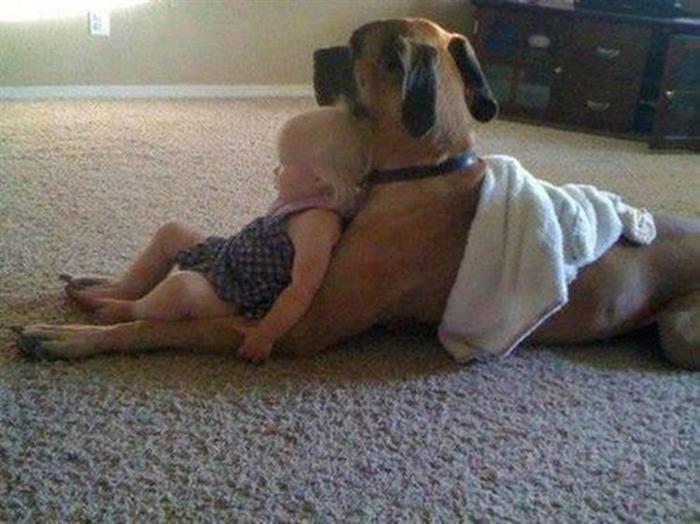
Dogs and Babies - Preventing Dogs Attacking Babies
I get a lot of emails from people who own dogs and are about to have a baby. These people want to make sure they don't have an issue with their dog attacking a baby.
There is a protocol for dealing with dogs and newborn babies. It starts with NEVER allowing ANY dog to be unattended around your baby. Not even for 5 seconds. In addition, the dog is NEVER allowed in the baby's room. NOT EVER! If you don't own a dog crate, it's time to buy one.
When parents bring a newborn baby home from the hospital, they should NOT ALLOW the dog to come and smell the baby or lick the baby. In fact, the dog needs to be trained to stay away from the baby.
Your goal is to teach the dog that the baby is YOUR BABY and has NOTHING to do with the dog. The baby should not be smelled or touched. The dog needs to learn that the baby is a higher-ranking member of the family pack and that you (as the pack leader) enforce the baby's rank. This is no different than a mother wolf who does not allow other pack members near her newborn pups.
The way to set this training up is to take items that have the baby's smell on them: baby clothes, baby sheets, dirty diapers, etc. Lay them in your living area where the dog is allowed to be.
The dog is to be NEVER allowed to go near these items. They can't play with them, or even go over and smell them, they can't go near them. The dog needs to learn that there is a bubble around the smell of a baby that they are not allowed to enter.
If they do go to smell them, they are corrected. Don't kid yourself that the dog can't smell these items from across the room and that's as close as they are allowed.
When you set up this training, the dog should already be on a long line. You can use one of our 15-foot cotton lines that is cut down will work or you can make one.
If the dog walks over to smell the diaper, he gets a verbal NO. If he does not turn and immediately (instantly) leave, he gets a serious level 5 correction. If he ignores that correction, you immediately correct it to level 8 or 9. The goal is to teach the dog that the smell of the baby is OUT OF BOUNDS!
NEVER leave these baby items laying around when you are out of the room. Treat them just like you treat your baby. The dog and these items are never together alone and not for a long, long time. Look at it like this: if you can't control the dog staying away from these articles of clothing, then you can't control the dog staying away from your baby.
Walking the dog and baby at the same time
You have a second opportunity to demonstrate PACK STRUCTURE when the time comes for you to take the baby and the dog for a walk. The dog must be on leash with a training collar.
There are only four kinds of training collars: a flat collar, a prong collar, a dominant dog collar, and a remote collar. Which one you use depends on the dog's temperament and training level. Frankly, for this, I would be using a prong or a remote collar. I have two DVDs/courses that teach you how to do the foundation training.

When you walk the dog, it is NEVER allowed to walk in front of the baby stroller. It must ALWAYS stay behind it. This is a huge thing for a dog. It genetically understands that higher-ranking pack members go through doors first, go through gates first, go downstairs first, and LEAD on walks.
If you take your dog for a walk (without the baby) and it pulls you down the street, you need to solve that problem before you take the baby with you. The golden rule of dog training is ONLY TRAIN ONE THING AT A TIME.
So if you already have issues with a pulling dog, you and your dog need training. You should get my DVDs and/or self-study online courses titled Basic Dog Obedience (view as course) and Remote Collar Training for the Pet Owner (view as course).
Dangerous Photos
The following series of photos demonstrates as dangerous of a situation as I could imagine.
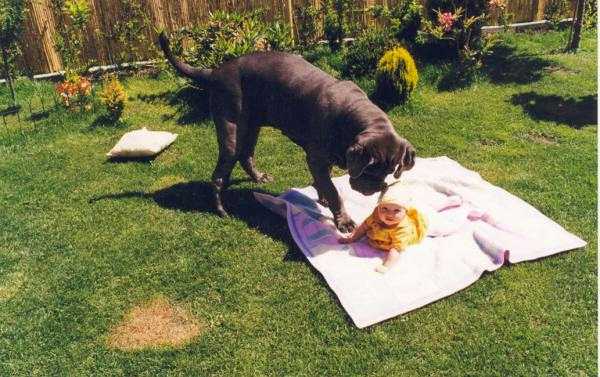
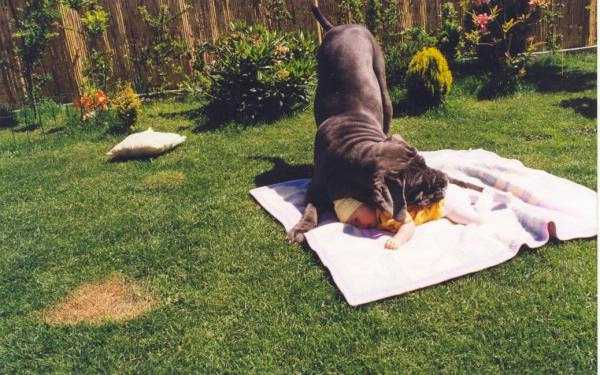

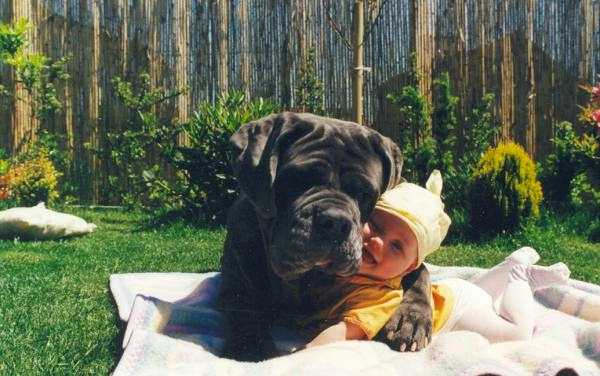
If you think these photos aren't dangerous, I highly recommend you read this article titled Before You Share That “Cute” Dog and Baby Picture by Eileen Anderson.
A dog doesn't have to be “vicious” or “mean” to bite. Sometimes all it takes is for him to be startled. Very young children, with their erratic movements, lack of fine motor skills, and exploratory natures, can stress out the most tolerant of dogs. It's not fair to subject dogs to that. It's not wise, either. Having a dog's face, with that mouthful of teeth, up close to an infant's head is an enormous risk. It's not something to show off on social media. —Eileen Anderson, Before You Share That “Cute” Dog and Baby Picture
Here is an email I got from a woman that demonstrates the need for parental control of their kids:
Hello Mr. Frawley,
I have read your article regarding dogs and babies. I hope that you will be able to answer my question. For the most part, I am thinking that my 2 1/2 year old dog (mixed breed) is submissive. We got her at the local shelter and they told us that she was a stray.
We took her to a dog obedience training using an e-collar and she has been very obedient. We ask her to sit, down, quiet, come and she is not allowed to cross the street until we tell her to when we are walking and she carries out the commands. In addition, she does not eat her food until we tell her to and she does not enter into the house until it is ok.
My concern is that last October 2006, a little girl was running after her, yelling, and pulling her tail. She "lightly" jumped on Summer (dog's name) and fell on her clawing at her. I saw that Summer did not like it so I asked my husband to take Summer away. My husband took her into the next room and the little girl soon followed and continued to run after Summer. Summer ran away and the little girl caught up to Summer, fell on Summer and Summer snapped back. She did not break the skin, but left a little mark.
We have an 11-month-old girl and she has not shown any signs of aggressiveness. The other day, however, my daughter was holding on to the door gate, and Summer stood about two feet away and snapped from the other side.
Summer is a very good dog and for the most part, I keep them apart and they don't bother each other. I definitely will be training my daughter not to touch Summer and vice versa. I have trained Summer not to enter my daughter's room and not to touch any of her toys...and I will be teaching my girl not to touch Summer's.
In your opinion, do you think because of the incident with the little girl and Summer snapping from the other side of the gate poses a threat to my daughter? After the snapping, I immediately told her "down" and she went down right away. Unfortunately, I usually have the e-collar on her, but didn't at the time and my immediate response would have been to correct her if I had it on. What do you think?
Thank you so much for your time in advance.
Warm Regards,
Rose
Rose,
What you describe is DROP-DEAD STUPID!
If this happened in my home, I would get pissed at the parents of this girl. They should control her or I WOULD!!!
Dogs are not toys nor should owners expect them to be TORMENTED by kids of any age. It's your responsibility to control your child or any child that's around your dog. In your case, it sounds like you have a great dog. It tried to move away on more than one occasion and you screwed up so the dog did the only thing it could to tell this child to “leave me alone.”
Had you done the things in my article, this never would have happened. In case, you should have a dog crate and you should use it.
Ed








Ask Cindy.